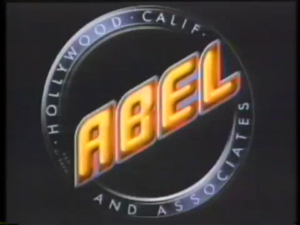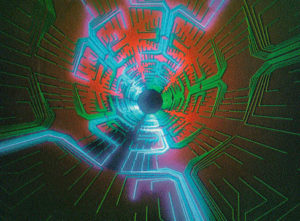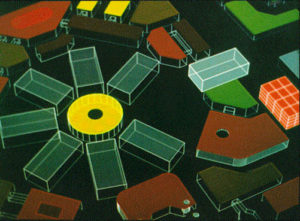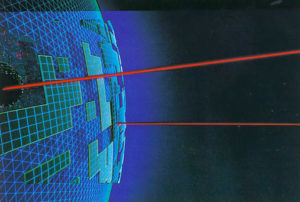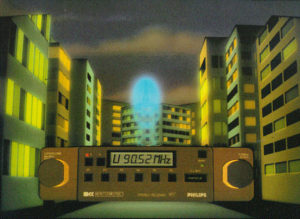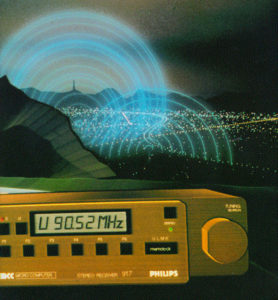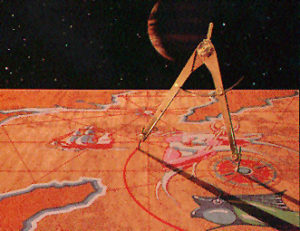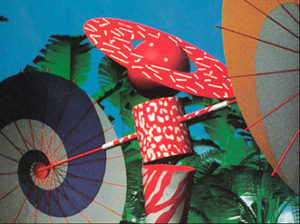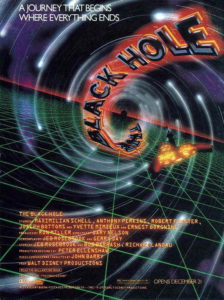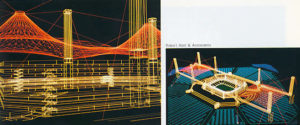Chapter 6: Commercial Companies
6.5 Robert Abel and Associates

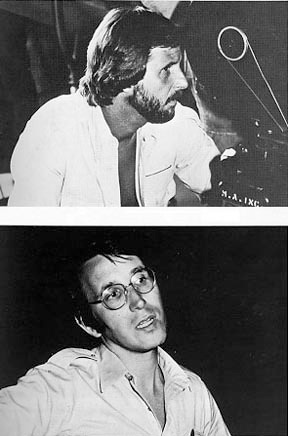
Robert Abel & Associates was founded in 1971 by Bob Abel, with his friend and collaborator Con Pederson. Abel had done early film work with famous designer Saul Bass and camera work with John Whitney, who was working with Bass on titles for Hitchcock’s Vertigo. After touring with several rock bands documenting their concerts, Abel joined Pederson to adapt the camera system used for the movie 2001 to general film effects work, particularly for the ABC television network, in conjunction with Harry Marks. Early expertise was in multiple stop motion photography rigs and special film effects layouts. At one point Abel & Associates employed nine horizontal motion control tracks, several 360 degree motion-controlled boom arms, optical printers, front and rear projection systems, and vector and raster graphics systems.

Abel did early innovative work in film effects, including creative use of slit-scan and film streaking, including a process perfected by Richard Taylor that was dubbed the “candy-apple neon” look used in famous spots for 7-Up and Levis.
The company later developed sophisticated pre-visualization vector graphics tools, using the Evans and Sutherland (E&S) PS2 graphics display. Bill Kovacs pushed this technology further, and created some outstanding graphics filmed directly from the vector device using vector fill approaches, including the notable Panasonic Glider animation, ads for TRW, and the The Black Hole test for Disney, which was used for the opening sequence of the movie.
Originally used in static photography to achieve blurriness or streakiness, slit-scan was perfected for the creation of spectacular animations. It enables the cinematographer to create a psychedelic flow of colors. It was adapted for film by Douglas Trumbull during the production of Stanley Kubrick’s 2001: A Space Odyssey and used extensively in the “stargate” sequence.
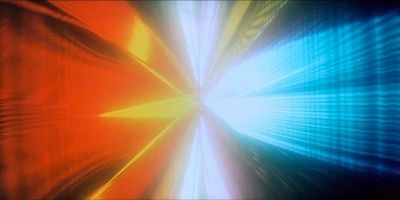
Slit-scan is an animation created image by image. Its principle is based upon the camera’s relative movement in relation to a light source, combined with a long exposure time. The process is as follows:
- An abstract colored design is painted on a transparent support
- This support is set down on the glass of a backlighting table and covered with an opaque masking into which one or more slits have been carved.
- The camera (placed high on top of a vertical ramp and de-centered in relation to the light slits) takes a single photograph while moving down the ramp. The result: at the top of the ramp, when it is far away, the camera takes a rather precise picture of the light slit. This image gets progressively bigger and eventually shifts itself out of the frame. This produces a light trail, which meets up with the edge of the screen.
- These steps are repeated for each image, lightly peeling back the masking, which at the same time produces variation in colors as well as variation of the position of the light stream, thus creating the animation.
(Also see https://petapixel.com/2017/10/18/role-slit-scan-image-science-art/)
This mid-1980s demo from London shows many good slit-scan effects https://www.youtube.com/watch?v=Ycnm36eC8z0&list=PLeE-uV1snMMEXp1QpaVFIONpUR3VimHzS
A good example of a slit-scan production is this opening for ABC television at https://www.youtube.com/watch?v=rM-Vkd7On2Q
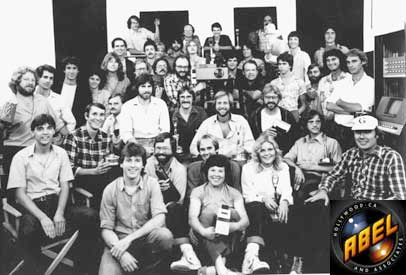
Abel was one of four companies (with Triple-I, Digital Effects and MAGI) contracted to do graphics for the Disney movie TRON in 1982, after Disney worked with Abel for promotional materials and The Black Hole project.
Movie 6.14 Panasonic Glider
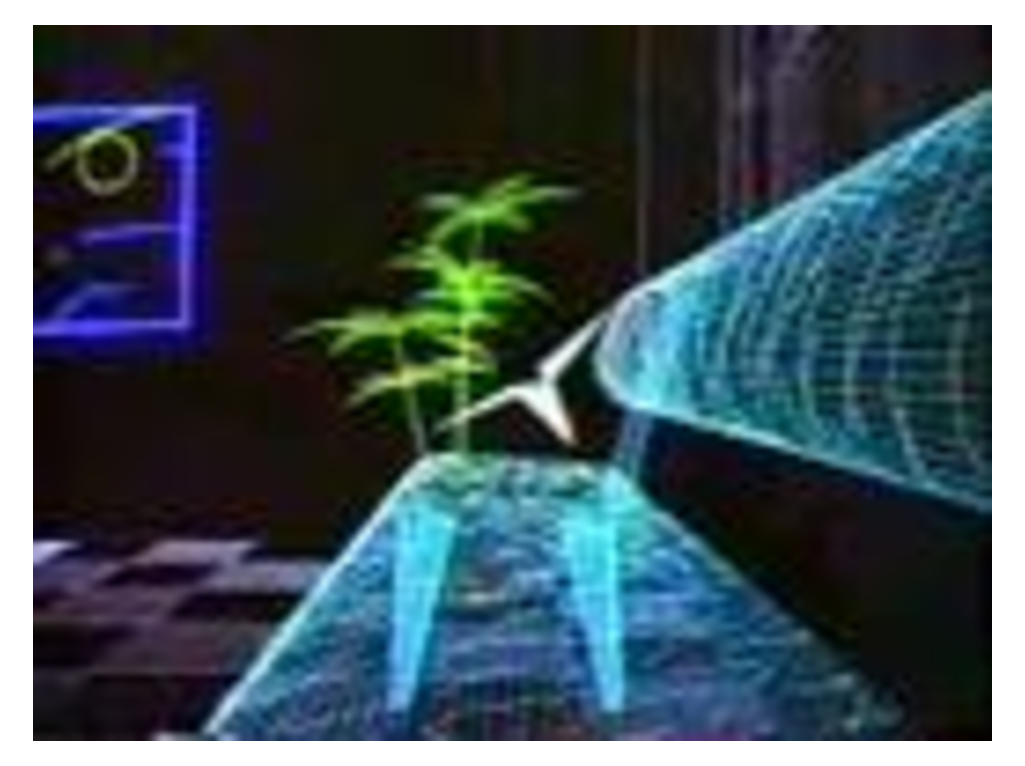
Produced by Abel in 1981, the animation was filmed directly from the screen of the E&S vector display, using colored filters https://www.youtube.com/watch?v=3KFV0HbYULk
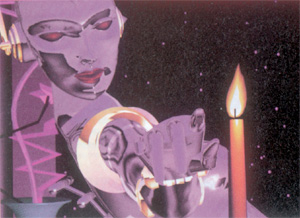
Abel later got heavy into raster graphics with software developed by Bill Kovacs, Roy Hall, Kim Shelly, Michael Wahrman, and others through a division called Abel Image Research. Key Abel raster work included a short demo film entitled High Fidelity, ads for Benson and Hedges, the Sexy Robot (after Fritz Lang’s 1926 robot in Metropolis?), a now-famous ad titled Brilliance, and the opening sequence for Spielberg’s Amazing Stories television show (see 1985 demo reel.)
Abel garnered multiple Clio awards (33) and had arguably the finest collection of art and technical directors in the industry. Their strength was in the ability to bring the knowledge of traditional effects work, cinematography and film making to the area of CGI. The list included “Doc” Baily, Michael Gibson, Frank Vitz, Tim McGovern, Randy Roberts, Charlie Gibson, Dale Herigstad, Richard Hollander, John Hughes, Steve Goldberg, Kenny Mirman, and others.
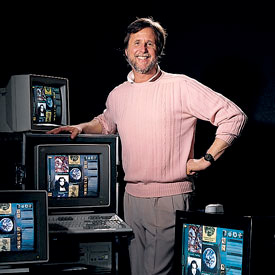
Abel Image Research, or AIR, as it was known in the discipline, was established as a subsidiary of Abel and Associates, and was charged with developing and licensing raster software for production. Their success was limited, and the division was ultimately purchased for $1M by Wavefront, ostensibly to keep AIR from competing with the new software company.
Besides the stable of motion control and film equipment, computer graphics equipment included DEC Vax, Gould and SGI computers, Evans & Sutherland vector devices, Raster Tech frame buffers and proprietary film and recording equipment.
Some people suggest that the Abel raster software was later developed into the Wavefront Technologies product when Bill Kovacs purchased the rights to it in 1987; others dispute this, and maintain that Wavefront was developed independently, with obvious influence from the Abel software only. Abel was acquired in October, 1986 by John Pennie of Omnibus Computer Graphics of Canada for $7.3 million.
Movie 6.15 Excerpt from High Fidelity
High Fidelity, a 1982 animation by Robert Abel and Associates to demonstrate the 3D raster capabilities of Abel Image Research (produced by Abel and Randy Roberts)
In 1987, Omnibus defaulted on investments and closed DP, Omnibus and Abel on March 27, 1987 (called DOA day). As a result of the closure, many former Abel animators and directors left and were instrumental in starting or working for other high quality CGI companies, including Rhythm and Hues, Metrolight, Sony Imageworks, Santa Barbara Studios, Boss Films, Kroyer Films, deGraf/Wahrmann, etc. Abel went on to be an Apple Fellow, and started his own company, Synapse Technologies, and began producing two interactive multimedia projects for IBM, “Evolution” and “Revolution,” as well as a project about flight for the Smithsonian Air and Space Museum. He also was affiliated with the Center for the Digital Arts at UCLA. (Note: Bob Abel passed away in September 2001.)
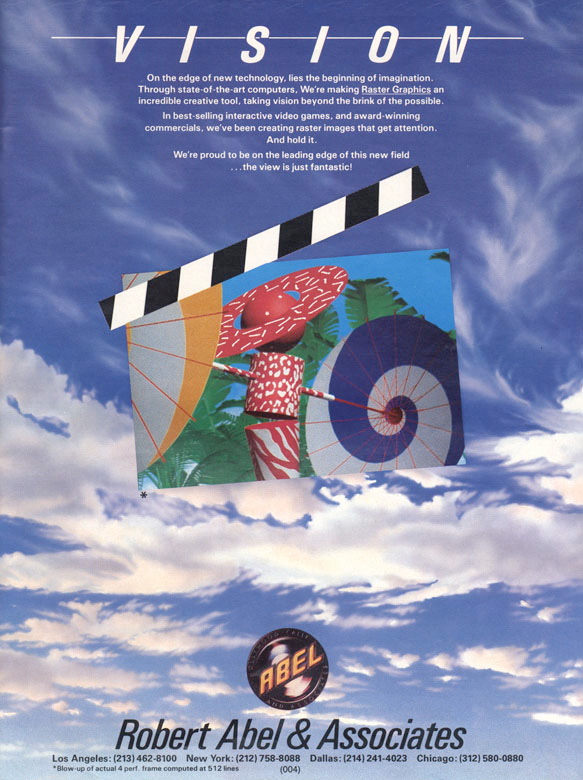
Movie 6.16 Robert Abel and Associates AT&T ad (1980)
http://www.youtube.com/watch?v=IrnUdM_uF7s
Movie 6.17 Robert Abel and Associates Demo (1981)
http://www.youtube.com/watch?v=QwpOSZeGmzw
Movie 6.18 Robert Abel and Associates Demo (1982)
http://www.youtube.com/watch?v=cT3_3d2JcR0
Movie 6.19 Robert Abel and Associates Demo Reel (1985)
http://www.youtube.com/watch?v=-1Yozk0g1YM
Movie 6.20 Robert Abel and Associates 7up Bubbles commercial
http://www.youtube.com/watch?v=K2U-lP-SOSQ
Movie 6.21 Robert Abel and Associates Hawaiian Punch ad (1987)
featuring music by Mark Mothersbaugh of DEVO
http://www.youtube.com/watch?v=SIfh0XMrg6w
Movie 6.22 Robert Abel and Associates Benson and Hedges ad (1987)
http://www.youtube.com/watch?v=fdBoKOpctp4
Movie 6.23 Robert Abel and Associates Brilliance ad (1983)
http://www.youtube.com/watch?v=sCXYxNt02RI
Movie 6.24 The Making of Brilliance
http://www.youtube.com/watch?v=eedXpclrKCc
Movie 6.25 High Fidelity
https://www.youtube.com/watch?v=WFoRJ5w2eEM
The February 2005 tribute by Ellen Wolff in VFXWorld magazine titled
Honoring Bob Abel: VES Bestows First George Méliés Pioneer Award
published before his posthumous Visual Effects Society honor.
“To accomplish his goals, Abel nurtured a new generation of artists to create the studio’s string of award-winning CG spots. Kenny Mirman, who had worked on Tron, directed a series of innovative commercials for clients like TRW and Benson & Hedges. Mirman has likened Abel to Jedi master Obi-wan Kenobi, for the way he mentored the talent at RA&A. Bob believed “one of the things that makes us special is that we pool people’s talents,” and RA&A paired art and technical directors together in highly productive ways.”
Excerpt from a Eulogy to Robert Abel by Kenny Mirman
Given at his Memorial Service on September 25, 2001
Read in its entirety at https://ohiostate.pressbooks.pub/app/uploads/sites/45/2017/05/VFXPro-Abel-.pdf
Bob’s beloved family Marah and Josh, Judi, Jerry and Kirsten, and to Bob’s dear friends, colleagues, students… DREAMERS.
We’ve lost the man carrying the torch.
The Navigator.
The one who lit the way.
Sometimes by wildfire.
Sometimes by light alone.
Sometimes by the seat of his pants.
It was Faith.
This Visionary, he was in the front, always, and his torch treated us to a view of remarkable beauty, wisdom and truth. He showed us the way, and it was magic.
Bob Abel endeared us, gifted us, inspired us, blessed us, revived us, guided us, to BE something we never thought possible…
True to our hearts.
Bob inspired us to not only dream, but to make our dreams reality. And he taught us by example of his passionate life. It borders on incomprehensible how Bob Abel, this man of such unspeakably passionate creative vitality and wisdom, could be taken from us so swiftly and so soon. It’s an indescribable loss. Yet I have to believe it’s some kind of mysterious beauty. Life’s way of perfection. And so I celebrate Bob Abel’s life today… this True Artist of a human being.
The one carving the path.
The Maverick. The Rebel. The Inspirer! The MythMaker. The Huckster.
The Storyteller. The Humanitarian. The Gunslinger. The Pitchman.
The Comedian. The Filmmaker. The TEACHER. The Godfather.
There are many more on your own list, I’m sure of it.
But one thing is certain. I bet that on all of our personal lists of “Who he was,” in capital letters it says… Bob Abel was THE VISIONARY.
A guiding light to not only an industry, but to art, to education, and to history.
He moved us. And I miss him deeply.
Gallery 6.3 Robert Abel & Associates Image Collection
- Abel logo
- Vector animation from commercial for AT&T
- Vector animation from commercial for AT&T
- Vector animation from ad modeled after the opening for TRON
- Ad for Philips
- Ad for Philips
- Scene from TRON
- Scene from TRW ad
- Scene from animation High Fidelity
- Poster for Black Hole
- Scenes from a promotional spot for a regional stadium with a movable roof structure
